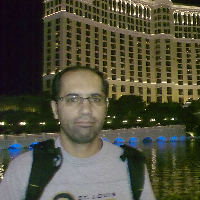Predicting the goal orientation of elite and non-elite taekwondo players based on perceived motivational Climate
The purpose of this study was to investigate the role of perceived motivational climate in predicting the goal orientation of elite and non-elite taekwondo players.
This study was descriptive-correlational, and its statistical population was all elite and non-elite taekwondo players in Isfahan city. Based on the population size, 300 samples with a mean age of 25.1 were selected using the Morgan table. Questionnaires on demographic information, goal orientation in sport, and perceived motivational climate in sport were distributed among 150 elite taekwondo players and the same number among non-elite taekwondo players in selected clubs. The completed questionnaires were collected for analysis. Data were analyzed using Pearson correlation coefficient and stepwise multiple regression.
The results showed that in elite taekwondo players, goal orientation had a significant relationship with task orientation (r=0.692, p=0.001), perceived motivational climate (r=0.420, p=0.001), and predicted 47.5% and 2.7% of their goal orientation, respectively. In non-elite taekwondo players, goal orientation had a significant relationship with ego orientation (r=0.522, p=0.001) and predicted 26.8% of goal orientation sequentially.
Overall, the results showed that perceived motivational climate had a more effective role in predicting the goal orientation of elite taekwondo players compared to non-elite taekwondo players.
-
The Role of Justice in Sport Facilities Distribution Using AHP Methodology (Case Study: ShahreKord City)
Leila Ghaderi Ghahfarrokhi, *, Masoud Naderian Jahromi, Hamidreza Ali Akbarian
Archives in Sport Management and Leadership, Autumn-Winter 2023 -
Identification of the Effective Factors on Professional Thinking and Lifestyle of Elite Futsal Players Based on The Grounded Theory
Razieh Jafari, Somayeh Safari
Human Resource Management in Sport Journal,



